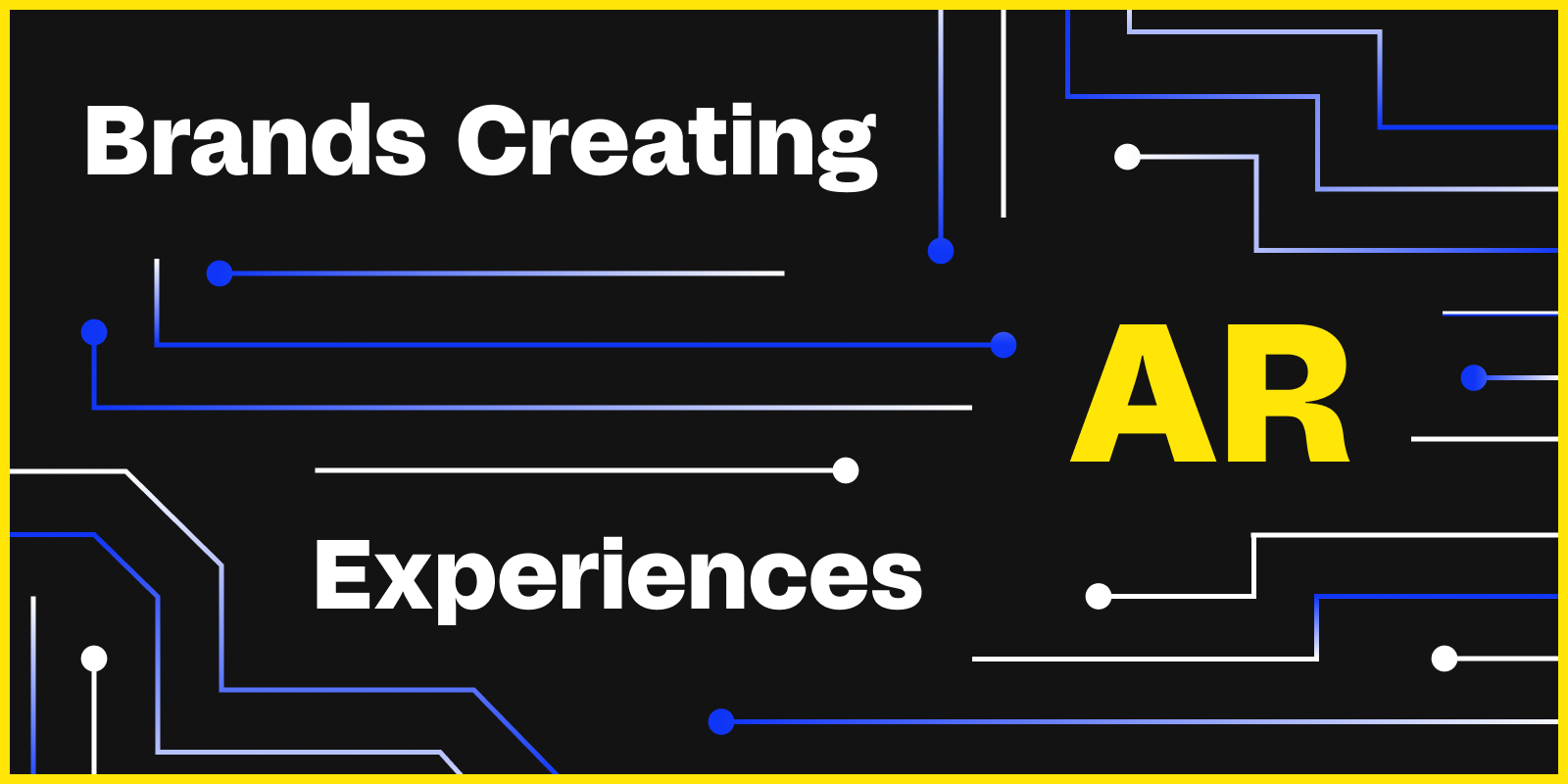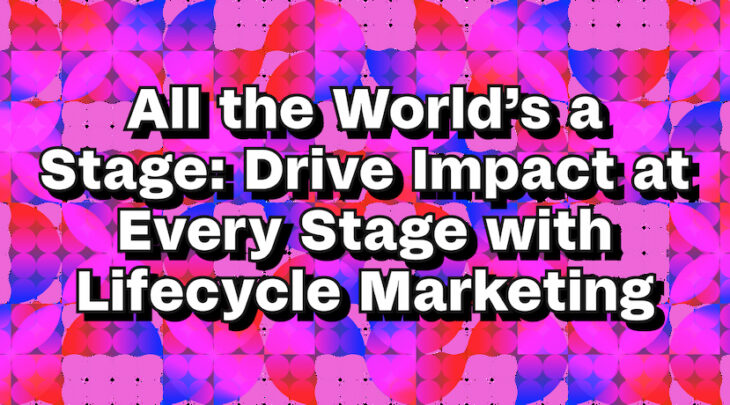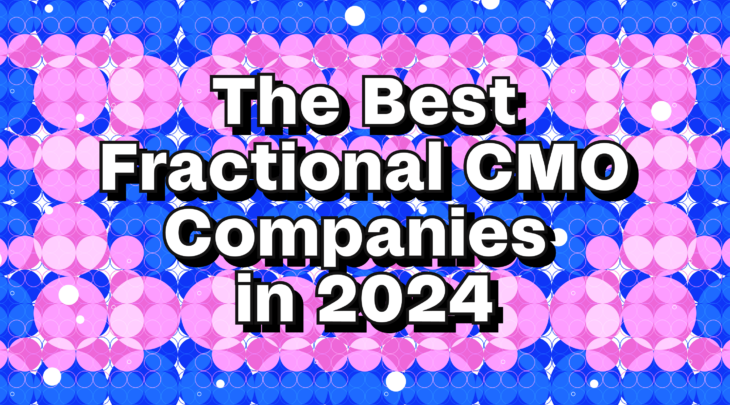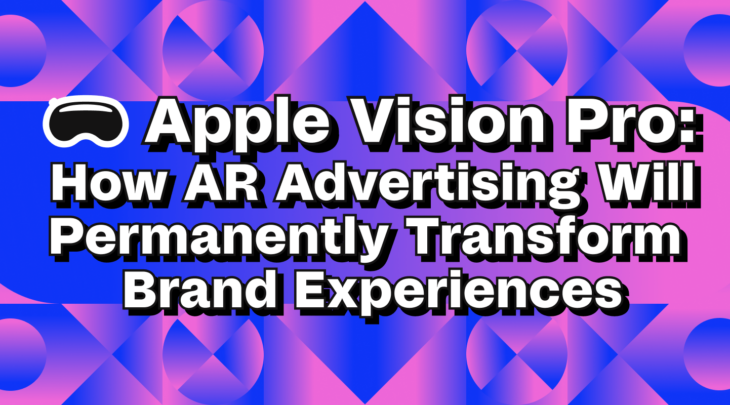A Quick Definition
Augmented reality (AR) and virtual reality (VR) are reality technologies that either augment or replace a real-life environment with a simulated one. So, how does AR work? Augmented reality (AR) enhances your surroundings by overlaying digital components on a live view, most commonly utilizing a smartphone’s camera. Virtual reality (VR) is a fully immersive experience in which a virtual world replaces the real one.
When It Started💡
Did you know that extended reality (XR), which encompasses virtual reality (VR), augmented reality (AR), and mixed reality (MR), has roots dating back to the 1800s?
1838
Charles Wheatstone introduces the concept of VR with the creation of stereoscope a technology where the brain integrates two pictures (one from each eye) to create a single three-dimensional image.
1995
Nintendo created the “Virtual Boy”. It provided gamers with a 3D experience unavailable on TV displays or mobile devices.
2016
Microsoft unveiled the HoloLens headgear, which took the concept of augmented reality to a new level by allowing users to interact with it.
Pokémon GO game catapulted augmented reality into the public.
2020
Virtual reality, augmented reality, and mixed reality has spread throughout many businesses.
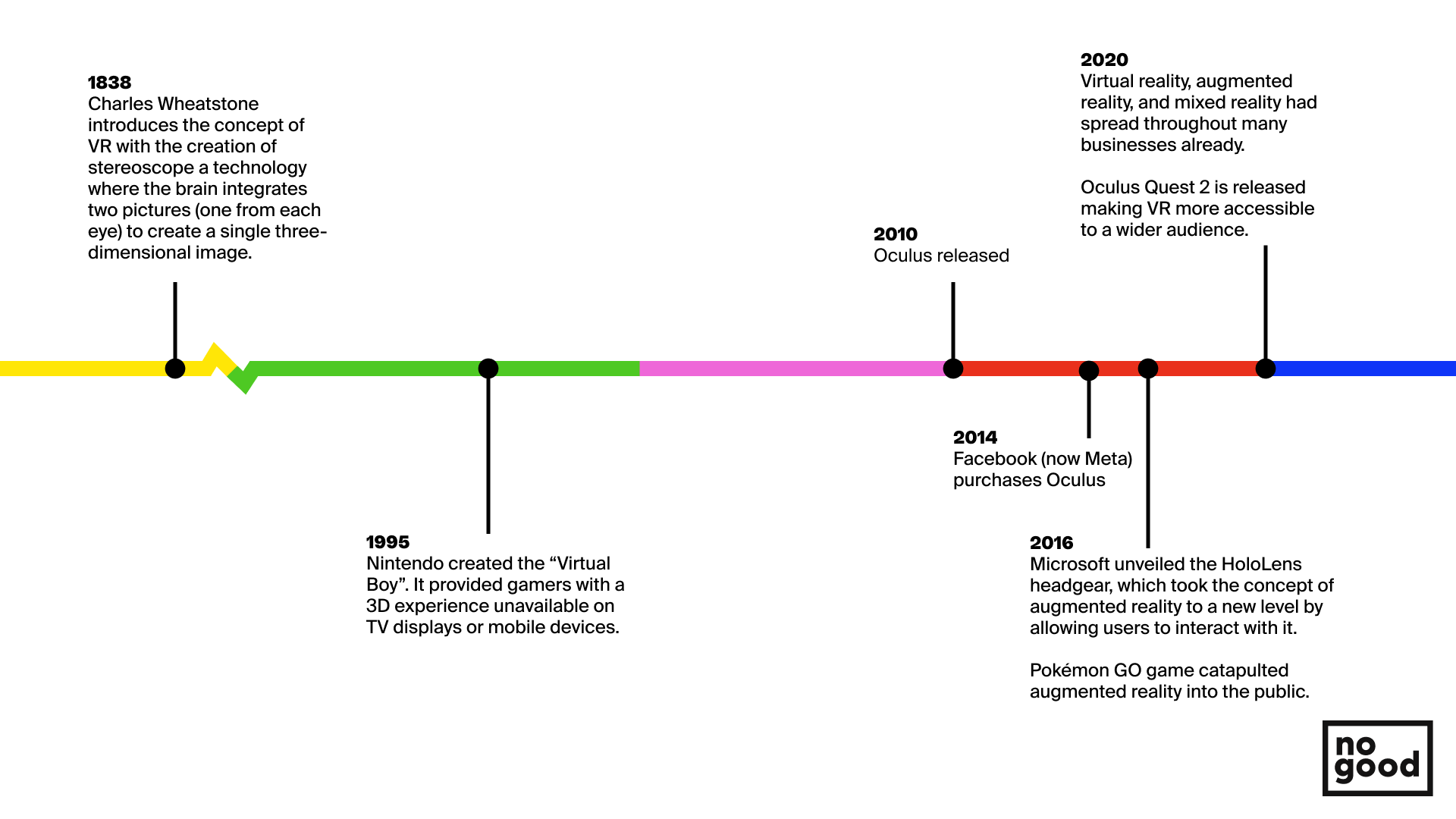
The 1900s
- In 1935, American science fiction writer Stanley Weinbaum released Pygmalion’s Spectacles, a novel in which the main character uses a pair of goggles to explore an imaginary universe.
- The first AR technology was seen at a live NFL game with the yellow yard marker shown on Sports-vision in 1998 — showing a yellow line overlaid on top of the live camera feed. It was a game-changer, and the concept of superimposing visuals on top of a live image swiftly extended to other sports broadcasts.
- Ivan Sutherland, a Harvard professor, invented the first AR headset in 1968. It projected computer-generated visuals that improved the user’s vision of the environment — a forerunner to today’s augmented reality (AR) experiences.
- Moving into the 1970s, MIT developed the Aspen Movie Map, a computer-generated tour of Aspen’s streets based on images shot by a vehicle driving around the city. (Does this ring a bell, Google?) This was likely the first demonstration of how virtual reality might move viewers to a whole other location.
The 2000s
- XR technologies began to gain traction in 2010 and beyond. At 18 years old, Palmer Luckey designed the Oculus Rift virtual reality headset prototype in 2010. The groundbreaking headgear rekindled interest in virtual reality with its 90-degree field of vision and utilization of computer processing power. Luckey’s firm, Oculus VR, was bought by Facebook in 2014 for about $2 billion after a Kickstarter campaign for the headgear garnered $2.4 million.
- Sony and Samsung both revealed that they were developing their own virtual reality headsets. Meanwhile, Google debuted its Google Glass AR glasses, which overlay digital information onto the real world and allow users to access apps like Gmail and its first Cardboard gadget, a low-cost cardboard VR viewer for smartphones.
- By 2020, virtual reality, augmented reality, and mixed reality had spread throughout many businesses. Today, XR technology is used in various industries, including manufacturing, mainstream shopping, education, healthcare, construction, and even law enforcement.
This expansion of XR applications is crucial to the technology’s progress since it demonstrates that XR is no longer limited to gaming and entertainment. I’m curious to watch how these technologies develop and become more widespread in the future of augmented and virtual reality. (Read our latest blog about Metaverse / we can put a link here to the Metaverse blog)
What is Augmented Reality?
In augmented reality (AR), a virtual environment is created to cohabit with the actual world, be instructive, and offer additional data about the natural world that a user can access without looking for it. When a handset is pointed at a piece of malfunctioning equipment, for example, industrial AR apps might provide rapid diagnostic information.
What is Virtual Reality?
Virtual reality is a comprehensive environmental simulation in which the user’s real world is replaced with an entirely virtual one. These virtual settings are frequently created to be larger than reality since they are fully synthetic. For example, in a virtual boxing ring, a user may fight a cartoon version of Mike Tyson.
How can AR and VR generally add to your growth marketing strategy?
- You are relevant: The customer’s demands and requirements are more critical than ever in marketing. Customers want brands to provide experiences that use new technology as it becomes available.
- You are technologically advanced: This implies that marketers must stay up with technological advancements to exceed client expectations and provide the best possible experiences.
- You create a community: Extended reality is a technology that is ready to transform the world of interaction by allowing people to connect and innovate in new ways. VR and AR will also change the way communities behave and interact with each other.
- You are one step ahead: When you examine how these technologies are already impacting industries, you may fall behind your competitors if you don’t use them.
Augmented Reality
- It enables businesses to provide clients with one-of-a-kind experiences through their mobile devices.
- When it comes to generating sales and enhancing brand value through mobile devices, AR provides you with another tool.
- With augmented shopping experiences becoming increasingly popular, brands can employ AR to let consumers experience products before buying them. They are testing everything from cosmetics to potential new furniture pieces!
- AR allows users to generate their own content and customize the experience to their own environment, giving them an experience that they can often only obtain from their favorite brand.
Virtual Reality
- Companies may use virtual reality marketing to bridge the gap between experience and action. You may utilize virtual reality to create a digital experience that can be used to market products and services instead of a physical one.
- You may utilize VR to display development as well as promote everyday items. Customers will be more involved in what you’re generating, and you’ll have a source of feedback due to this.
- Most significantly, virtual reality alters the relationship between brands and customers. People seek out VR brand experiences rather than utilizing ad blockers or clicking out of ads as fast as feasible. Your customers come to you rather than you having to go out of your way to attract them.
- VR provides a diverse range of social VR experiences by empowering its users to create their own. VR uses spatialized features suchs as 3D audio, multiplayer VR games, and virtual space stations where users may watch YouTube videos with friends to allow users to play, hang out, and (of course) communicate. This seems more like a new reality.
How are renowned brands utilizing AR and VR today?
IKEA
IKEA implemented IKEA Place, allowing buyers to digitally arrange rooms in their homes with IKEA goods and accessories. When you snap a photo of a place and pick an object, the app will automatically resize it to fit the room’s proportions. Users are able to touch a virtual sofa to see how big it is when expanded as a sofa bed.
According to the company, IKEA Place and other augmented reality products are expected to increase the firm’s bottom line over the following years. IKEA has already changed the way people buy furniture in the future.
The business claims that “the AR technology is so exact that you will be able to perceive the texture of the fabric and how light and shadows are recreated on your furnishings.”
Many companies from the furniture industry have followed them, for example, Wayfair, Amazon, Home Depot, Overstock, etc.
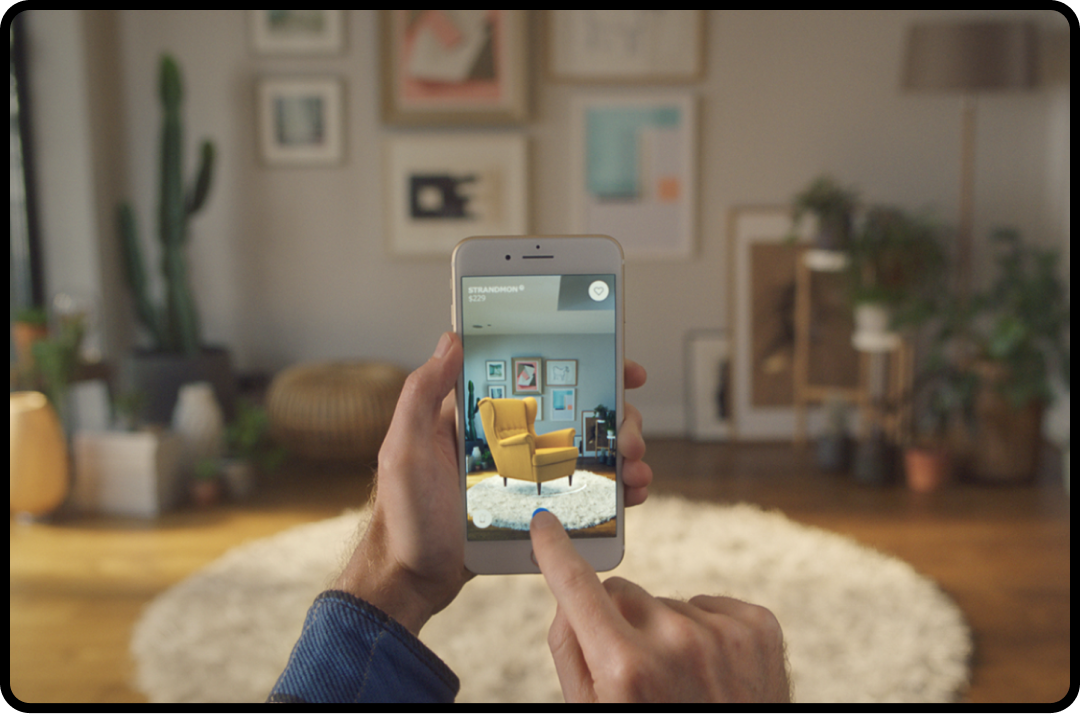
American Express
As part of its sponsorship of the 2015 US Open, Amex offered several events and experiences for on-site spectators. The centerpiece of the Amex on-site fan experience was “You vs. Sharapova,” a virtual reality game that pitted fans against tennis great Maria Sharapova in a simulated tennis match, combining live action and computer-generated graphics of the player.
Amex VR’s thorough design approach to customer experience was showcased in a behind-the-scenes film.
Amex returned to the 2017 US Open with new virtual reality customer experiences, co-developing “Air Tennis” with Venus Williams. To deliver an immersive gaming experience, this live game installation uses customized and responsive technologies such as air haptics and motion capture devices.
Players used their hands and body movements to return as many virtual tennis balls as possible against an AI opponent.
In its official smartphone app for Coachella, the famous music and arts event in California, Amex included an augmented reality feature for shopping. Cardholders were able to purchase certain products through the camera on the Coachella app AR, which was located throughout the festival grounds.
Amex uses experiential marketing events to engage people and keep its brand top of mind as a financial brand without a tangible product. These unique AR and VR experiences would also motivate social media users to post their photos online, earning the company PR.
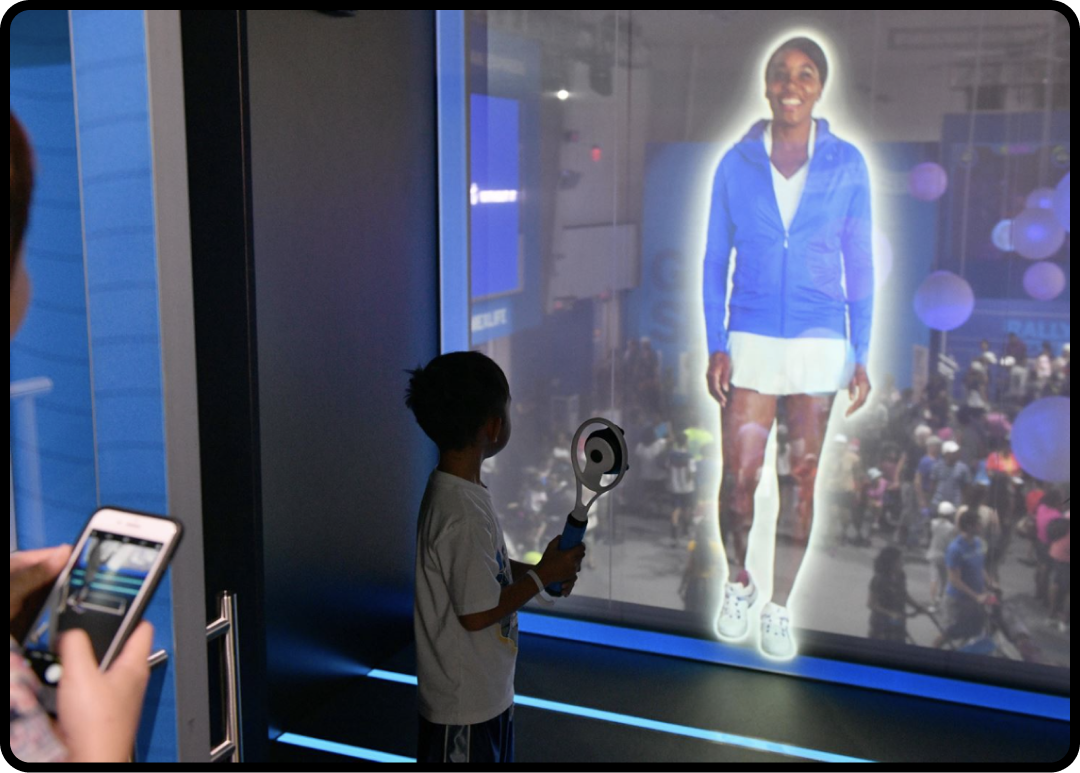
Burberry
It is difficult to examine examples of innovation in the fashion industry without mentioning Burberry. The British fashion company, known for its trench coats, is pioneering augmented reality (AR) for customer engagement and brand promotion. Read on to learn more about some of the company’s most successful projects AR.
Burberry partnered with artist Danny Sangra to create “Burberry-inspired” images for an augmented reality feature in its iOS app. An e-commerce store and interactive brand elements were brought together in this application. The AR component allowed users to personalize their environment by overlaying Danny Sangra’s photos on top of their photos, which they then shared on social media, allowing the company to reach new customers.
Another example of AR in fashion retail is Burberry’s collaboration with Google. The company cleverly transferred the in-store shopping experience to customers’ mobile devices. Thanks to this effort, Burberry provided 3D photos of the Black TB bag and Arthur Check sneaker to customers who searched for them online. Consumers discovered 3D images of the products by typing the corresponding product name into Google.
Burberry reached more potential customers by working with Google. How. Previously, 3D representations of items were only made available through a dedicated app or website. By working with Google, the retailer was able to expand its reach.
In addition, the technology promoted customized retailing of luxury goods and provided a more connected experience, but also controlled customers’ expectations of things. This gave shoppers a more realistic picture of things before they bought them, eliminating the need to go into the store to see the item in person and potentially reducing the possibility of returns.
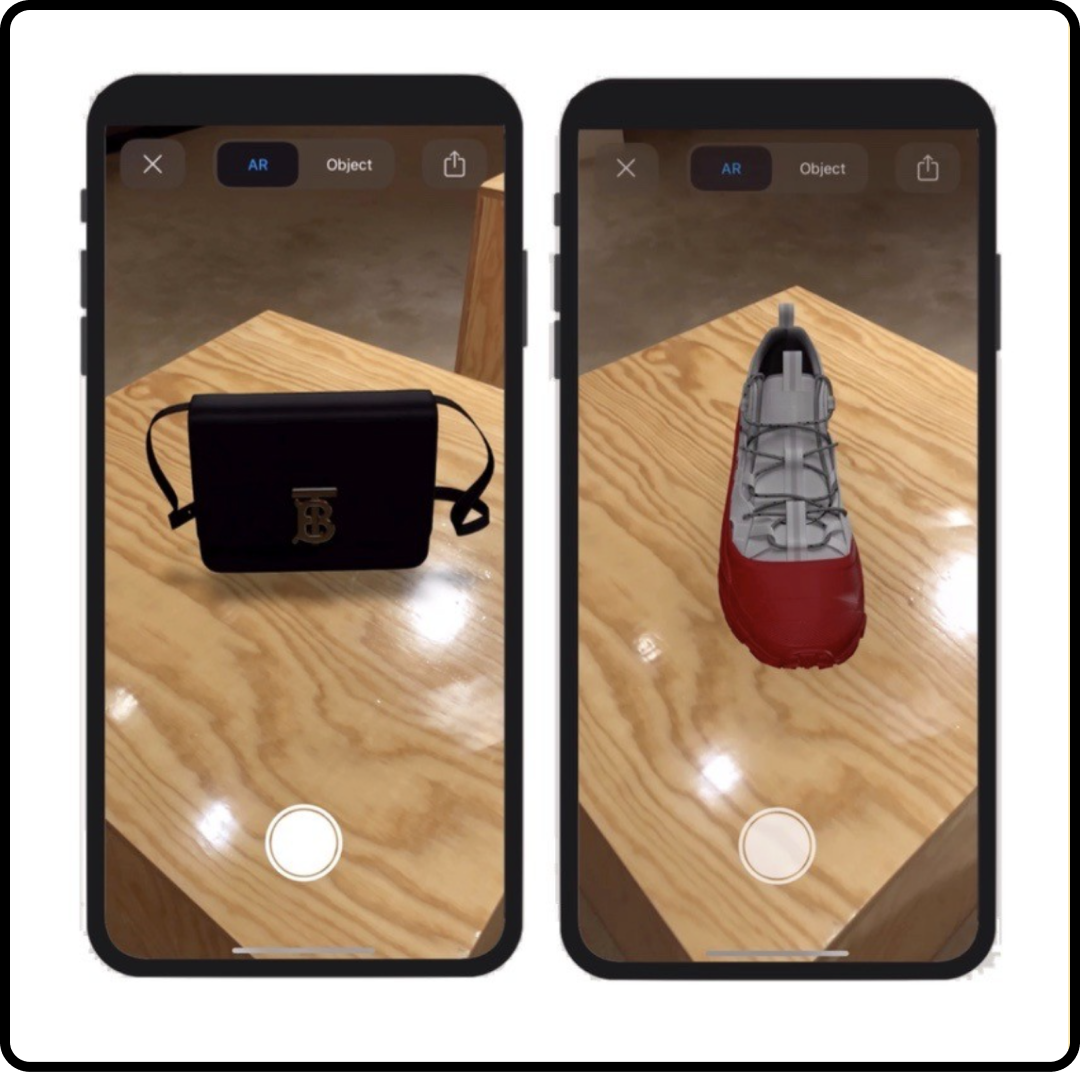
Sephora
Sephora’s “Virtual Artist” feature has been available through its main app since 2016 and remains one of the best examples of augmented reality in the beauty industry. Of course, Sephora has been promoting the use of the app as a substitute for in-store shopping in recent years.
Instead of having furniture in the house, the AR technology allows customers to see how certain items (like lipstick or eyeliner) might look on their skin. For this purpose, lips and eyes are scanned with Modiface technology and different lip colors, eye shadows, artificial eyelashes and other cosmetics are superimposed.
The main goal of the app seems to be to increase sales on the Internet, as buyers of beauty products often go to stores because they have concerns about how the products would look in real life.
Some may argue that there’s no substitute for trying products on real skin, but the advantage of the tool is the sheer number of products users can try – without the hassle or time commitment of visiting in person. In the meantime, it’s a bit of fun for customers and another opportunity for beauty companies like Sephora to provide entertainment and inspiration alongside their products.
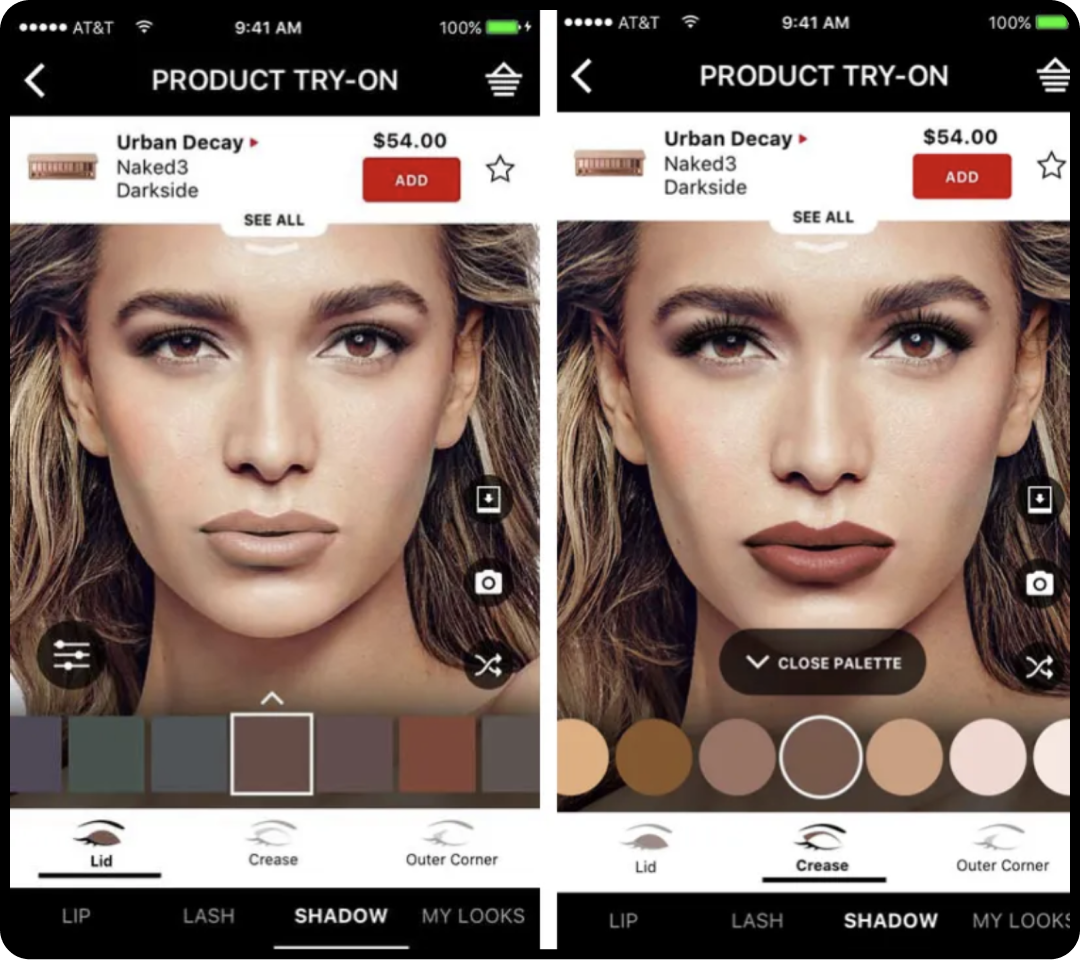
TOMS
TOMS, a shoe company recognized for its humanitarian endeavors, uses virtual reality technology to create “Virtual Giving Trip,” a digital contribution campaign. This charity drive began with a pledge to donate a new pair of shoes for every pair of shoes purchased to a kid in need. The company’s workers and partners will then go on a philanthropic journey throughout the world, providing new shoes to children and seeing their efforts. TOMS works with Within (formerly named VRSE), a VR technology startup, to develop an in-store virtual reality experience utilizing VR technology to enable their consumers to engage in this significant excursion. Customers may virtually join this donation tour by wearing virtual reality headsets.
They’ll be seeing the kids get their shoes measured and fitted. They’ll also get to meet one of the recipients and observe how they live. TOMS has started backbone exhibits in select department shops and has placed the VR gadget in more than 30 retail locations worldwide. Customers have applauded and commended this unique and compassionate mathematics marketing method.
The TOMS virtual donation tour is an excellent illustration of what can be accomplished with virtual reality technology. Virtual reality’s value lies in its ability to give clients a unique experience and elicit emotional responses from them. TOMS has effectively displayed its brand’s affinity for its customers and pushed them to develop a stronger emotional bond with them. The company is empowered by its charitable endeavors, building a deep emotional link with its customers by allowing them to experience a firsthand charity trip and feel the impact of their donations.
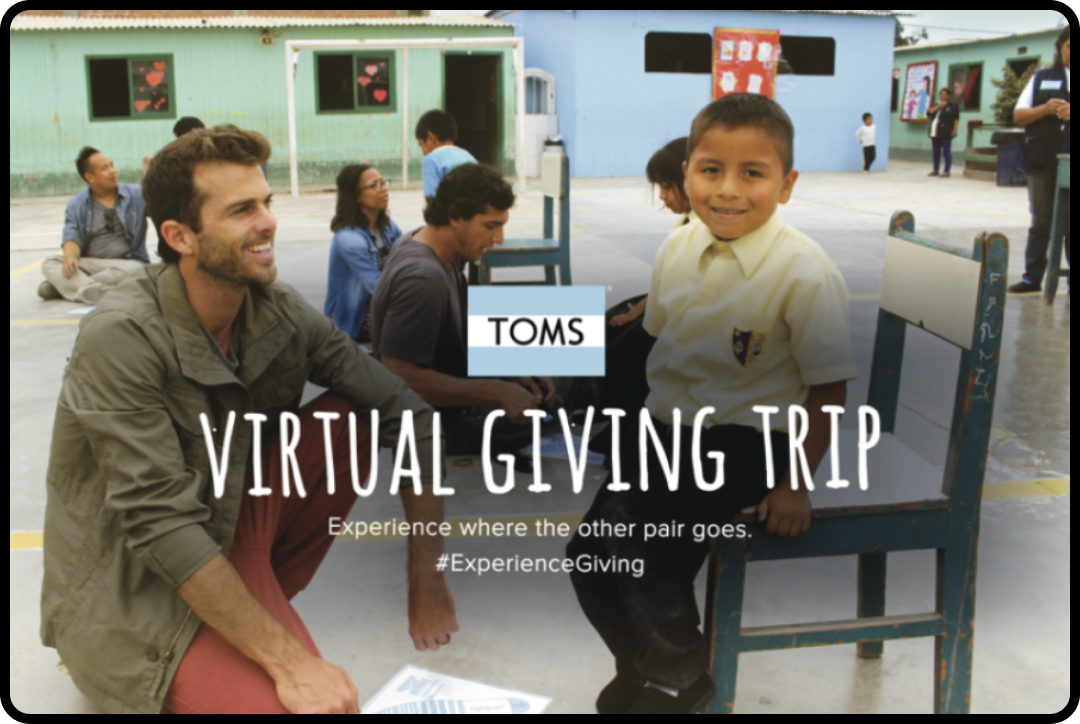
The New York Times
The New York Times has used AR and VR to give readers a feeling of location by incorporating the technology into its reporting. This strengthens tales when the reader is placed with journalists on the front lines, placing them in the right area at the right moment.
The NYT VR app was introduced in 2015 in conjunction with The Uprooted, a virtual reality film about three children displaced by conflict. Viewers might experience what it’s like to be inside a refugee camp using virtual reality from the perspective of individuals who have been impacted.
Since The Displaced, the Times has released over 20 virtual reality documentaries on subjects, including the Antarctic and space research. It just debuted The Daily 360, a daily series of virtual reality (VR) or 360-degree videos taken from different sites worldwide. The Times’ most recent effort into augmented reality, on the other hand, has piqued our interest.
The outlet’s first AR-enabled piece, a preview of the Winter Olympics, was published in February 2018. Figure skater Nathan Chen and snowboarder Anna Gasser were among the athletes featured in the piece. Times readers could use the app to watch the athletes in the room next to them, zoom in and out, and move around 360 degrees to see them from all angles.
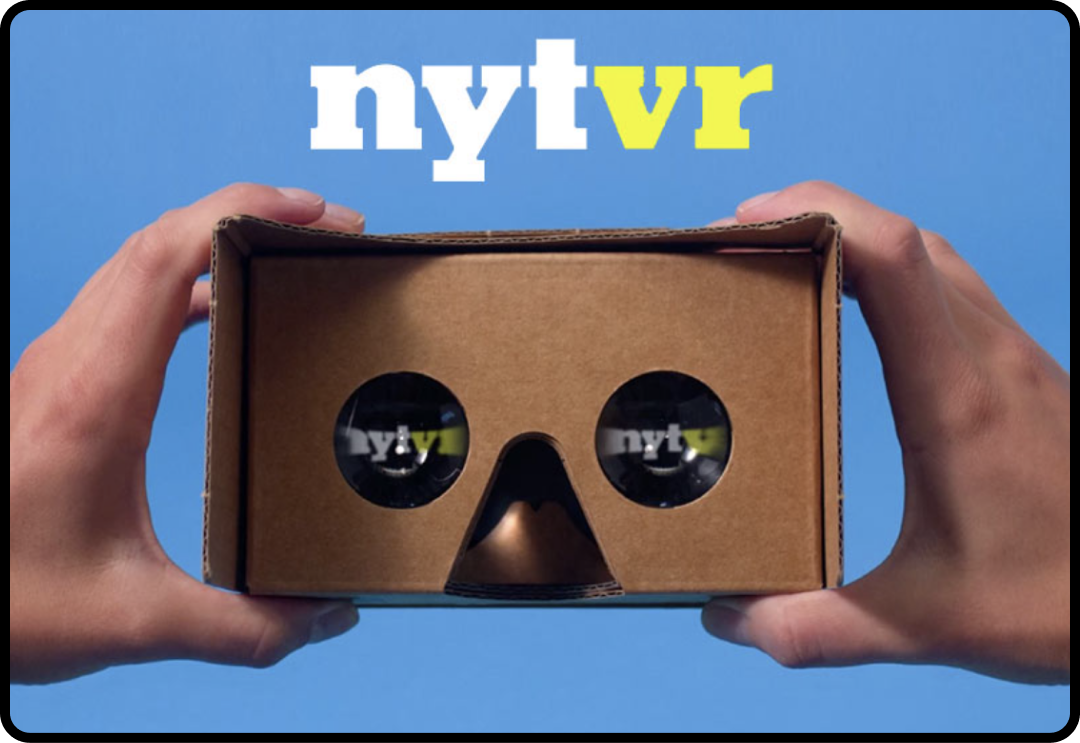
TL;DR:
As these examples of virtual reality and augmented reality show, the word “VR and AR marketing” can be applied to a wide range of commercial actions and opportunities – and as we said at the beginning, they have been around for much longer than you might imagine.
Consumers of all ages, especially younger generations like Generation Z, value companies that offer personalized experiences. And since most people use social media primarily for pleasure, setting up entertaining digital marketing campaigns is a specific approach to increasing brand exposure.
Large companies are experimenting with virtual and augmented reality to enhance their digital products.
Consider this: virtual reality marketing is not just the future, it’s already a reality. Smaller companies can assume consumers are familiar with digital marketing campaigns in VR and AR if they want to participate.
However, as interest in virtual reality marketing campaigns remains high, there’s no better time for companies to expand their digital products into this space. Learn more from our NoGood experts.
